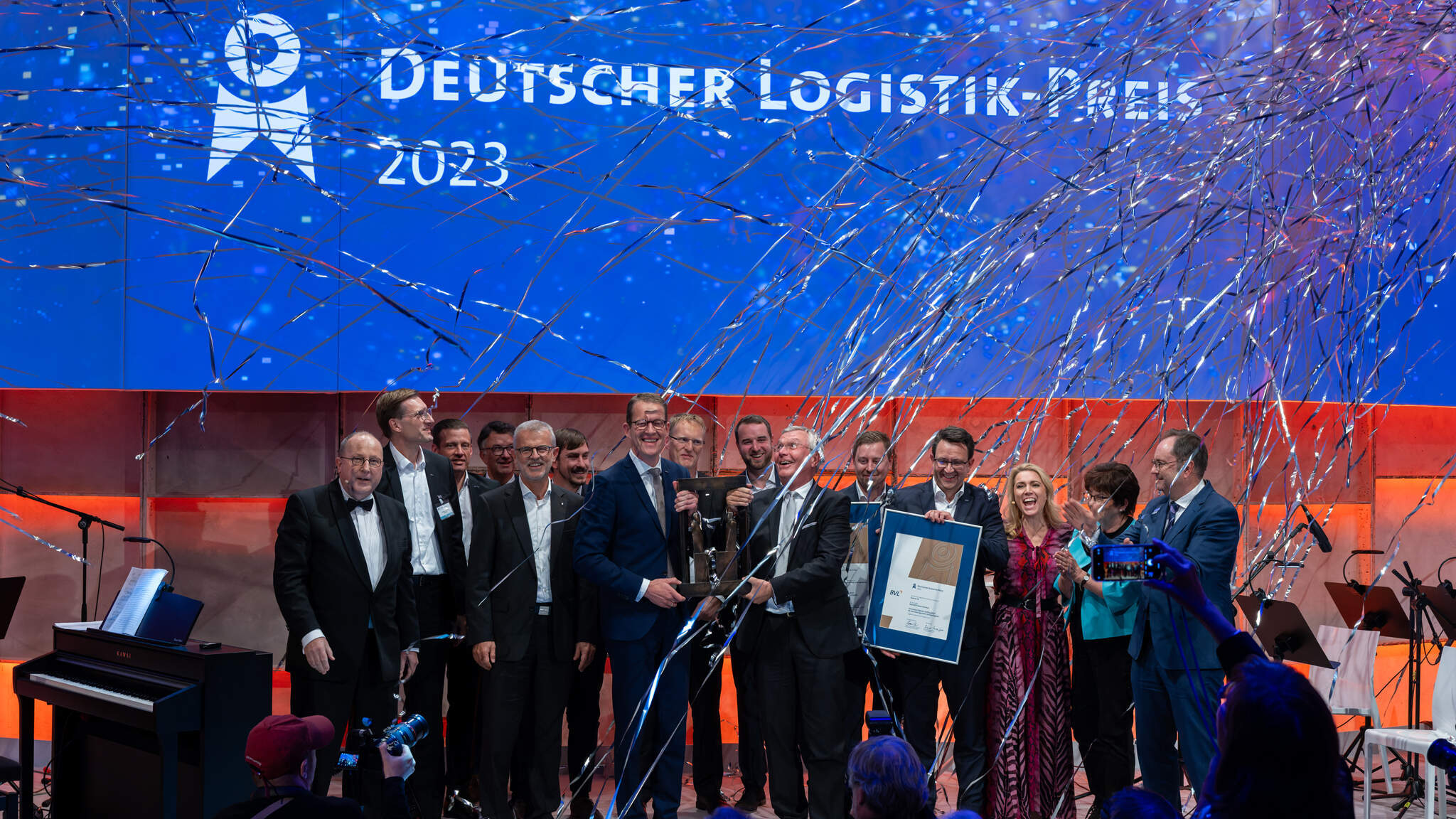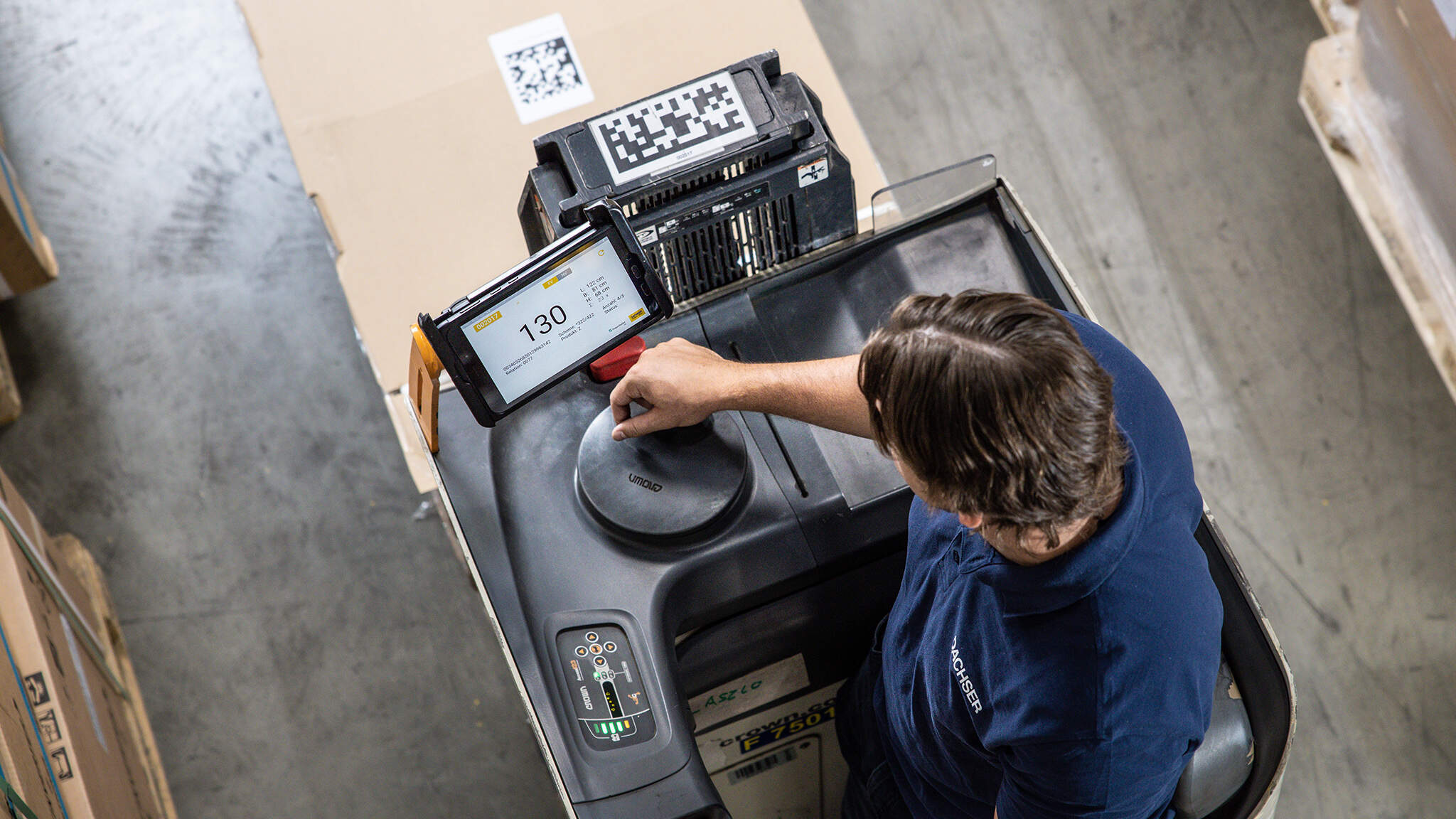DACHSER and Fraunhofer IML receive German Logistics Award for digital twin
German Logistics Association (BVL) honors joint research project with genuine practical potential.

The @ILO digital twin increases transparency in the warehouse. Individual work steps are optimized and take less time to complete. The application benefits not only logistics operatives and drivers but also customers, which in the future will be able to receive more precise information about their shipments. The @ILO digital twin is a core result of more than six years of joint research conducted at the DACHSER Enterprise Lab. This is where experts from the logistics provider work with researchers from the Fraunhofer Institute for Material Flow and Logistics IML in small, agile teams to develop innovations for the European groupage network and its transit terminals.
“We’re investing in joint research with Fraunhofer IML to drive forward digitalization in logistics and further enhance the quality of the services we offer our customers,” said Burkhard Eling, CEO of DACHSER, at the award ceremony in Berlin. “In this way, we are ensuring our company’s viability for the future. That this joint work has resulted in a practical innovation good enough to impress the German Logistics Award jury validates our approach and gives us an extra motivational boost.”
DACHSER now plans to take the next step in developing this innovation. In 2024, the family-owned company expects to start systematically rolling out the new technology at its European branches. “As a crucial milestone in our digital transformation, the @ILO digital twin represents a quantum leap in groupage logistics,” Eling says.
“We’re putting research into practice and doing so throughout Europe,” says Prof. Michael ten Hompel, Executive Director of Fraunhofer IML. “Even stacked up against Fraunhofer IML’s long history, this is an outstanding research success. It underlines the value of marrying scientific research with practical application. This is especially true when such interdisciplinary collaboration is lived as intensively and sustainably as it is at the DACHSER Enterprise Lab.”

Proven in practice: AI and automation are on the rise
Special AI-based algorithms in the @ILO software interpret the data collected every second by hundreds of optical scanning units on the terminal’s ceiling. Using this data, they automatically and immediately identify and locate all packages. In the future, they will measure these as well. This creates a complete, always up-to-date image of the terminal and its processes—a digital twin.
Integrated into practical workflows, this technological innovation has already proved its worth in the @ILO pilot transit terminals of the branches in Unterschleißheim near Munich and Öhringen near Heilbronn. Some process sequences performed between inbound and outbound goods were completed 15 to 35 percent faster there. This was achieved by eliminating actions such as scanning barcodes by hand and manually inventorying packages each day. As a result, short-distance transport vehicles can start making deliveries earlier in the day, which gives drivers a head start in morning rush-hour traffic.


Next innovative step: AI-assisted loading
